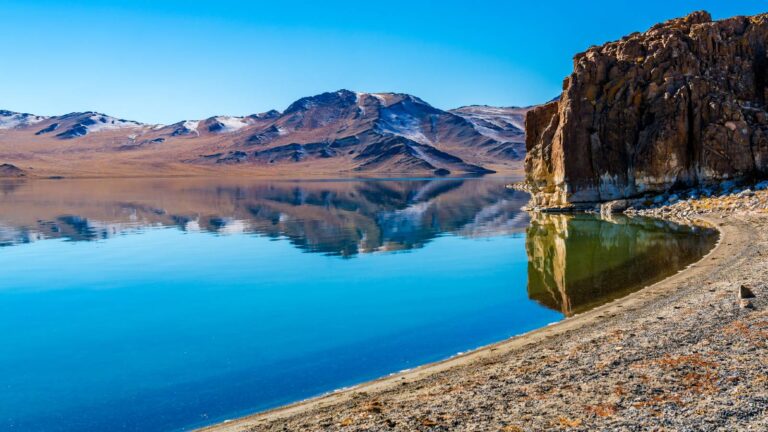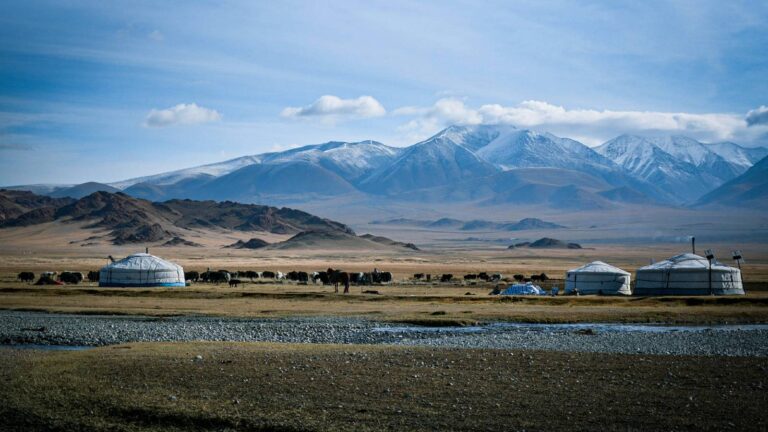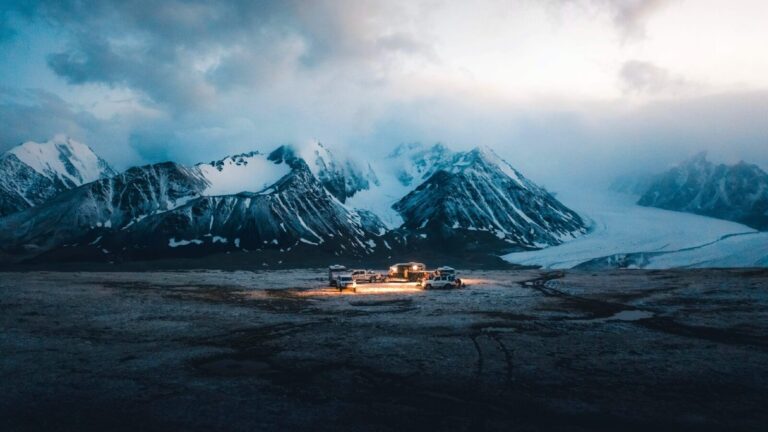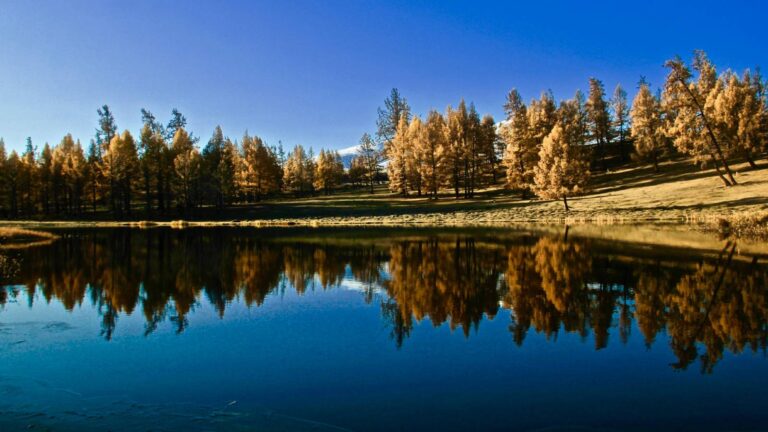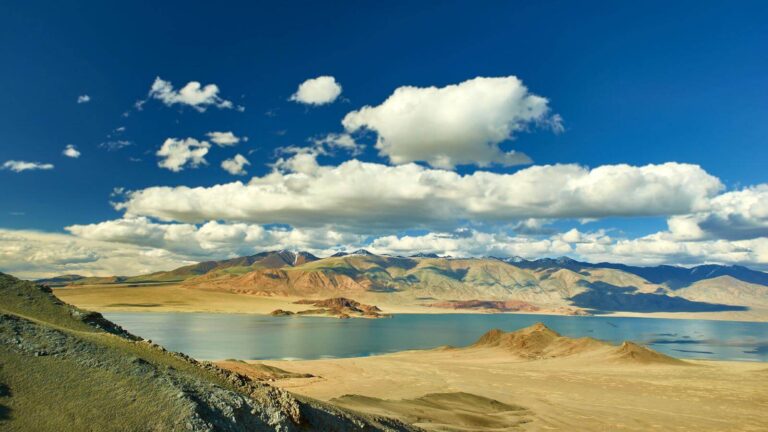Getting There
Approximately 2km south-east of Khoton lake.
What to Expect
Surveys of the region have estimated there to be hundreds of thousands of petroglyphs, including concentrations of several thousand in some canyons, plus over a thousand stone monuments, around 50 “deer stones,” and numerous tombs, burial mounds, ancient graves, and other sites. Through these images etched onto cave walls, one can see the roots of modern ger-dwelling riders that live in the mountain valleys and steppes of Bayan-Ulgii to this day.
Bayan-Ulgii is inhabited by the Kazakh, Durvud, Uriankhai, Tuva, Khalkha peoples although Kazakh is the most significant number of inhabitants.
History
Bayan-Ulgii has been a crossroads throughout history for empires, conquerors, and trade routes. Just north of the fabled Silk Road; Turks, Scythians, Huns, Tuvans, Uighurs, Mongols, and Kazakhs have left their mark on this vast land. Petroglyphs from Turkic tribes and the Huns dating from 10,000 BC to around 100 AD help archeologists trace the evolution of hunter gatherers to pastoralists to the semi-nomadic herders.

